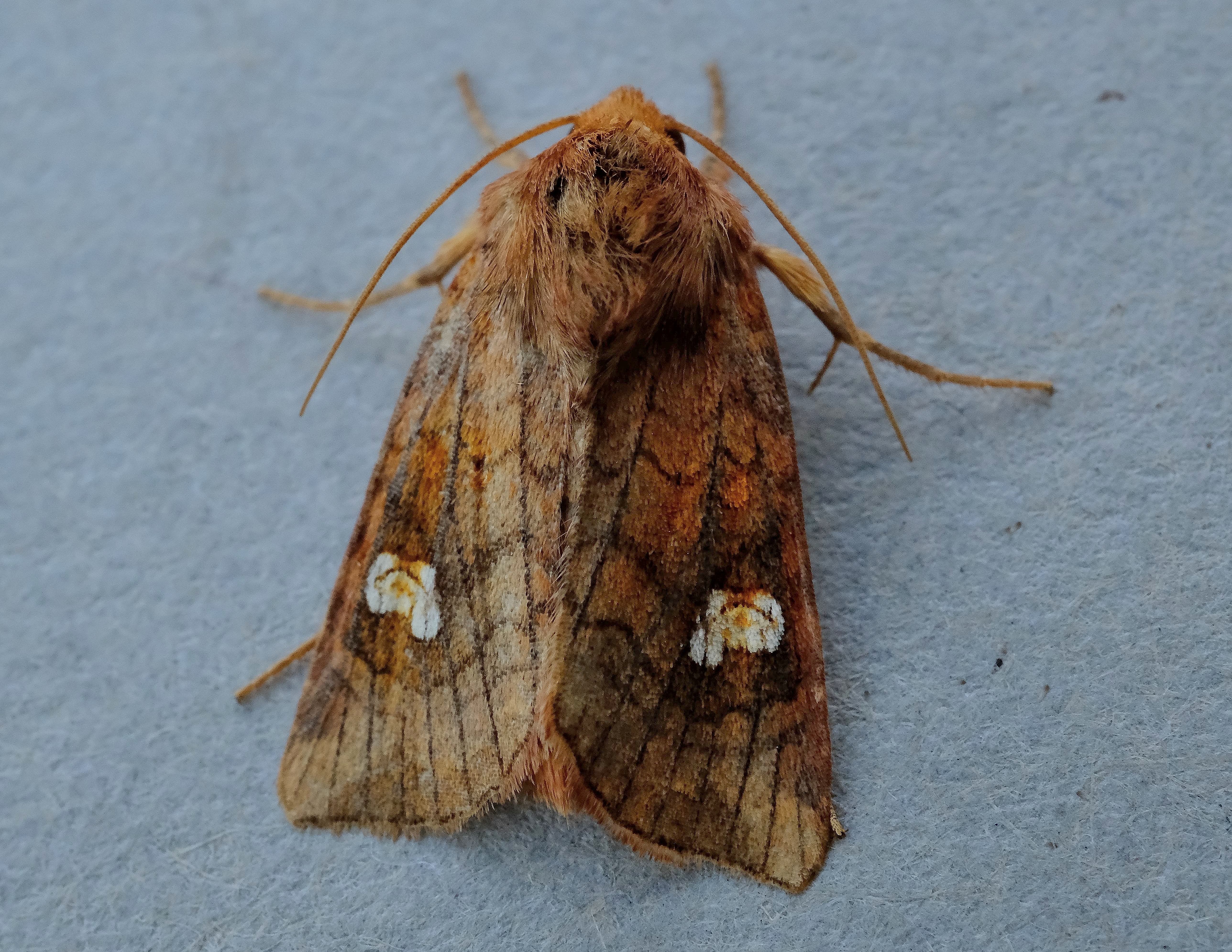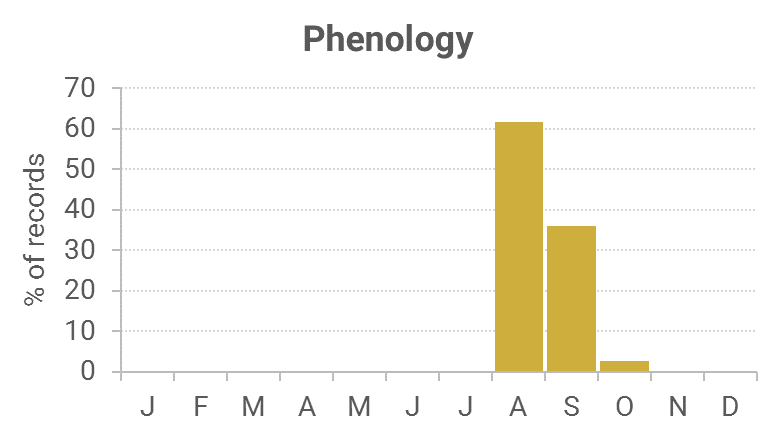Identification
The Ear moths cannot be reliably distinguished from each other by external features and species identification requires examination of the genitalia.
Record undissected specimens as Ear moth agg. (Amphipoea oculea agg.).
Recording Method.
Attracted to light, also comes to sugar and flowers.
Life cycle
One generation. Overwinters as an egg. Larvae are said to be present during April to June, but rarely seen. Pupation takes place underground.
Larval foodplants
Grasses, including Annual Meadow-grass and Tufted Hair-grass.
Habitat
Unimproved grassland, marshes, moorland, saltmarshes and woodland rides.
History
Somerville (1858) whilst on a visit to the Moffat area had found this species on the heads of Ragwort in August of that year. Lennon (1863) had found it not common, recording it only from Comlongan (VC72). However, Douglas Robinson (1870-71) on Almorness had found it abundant on flowers in August. Gordon (1913) had found it very variable, often abundant and generally distributed around Corsemalzie, Wigtownshire.
D. A. Mowat, keeper at Killantringan Lighthouse (VC74) sent a couple of specimens to William Evans in August, 1914, for his research on Scottish insect migration. During his stay in 1942-43 near Gatehouse of Fleet, Archibald Russell had observed it. David Cunningham (1952) had found it to be common during the 1950s.
However, it was not until Sir Arthur Duncan found it at Closeburn on 28th August 1932 and determined later by E. C. Pelham-Clinton, that it was confirmed for the region. Also, during the early 1970s, it was recorded on the Silver Flowe NNR, the genitalia being checked by R. M. Palmer.
All previous records being treated with caution as the similarity with the other ear species was probably not known then.
During 1976-77 there were sixteen records at three of the Rothamsted stations, namely, Waterside Mains, Bridge of Dee, with one record from Penninghame. Genitalia confirmed records are from a small number of sites all in VCs 72 and 73.







